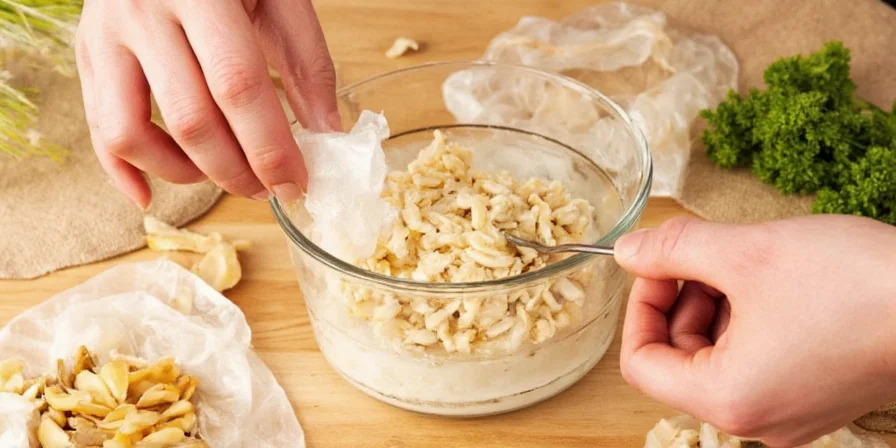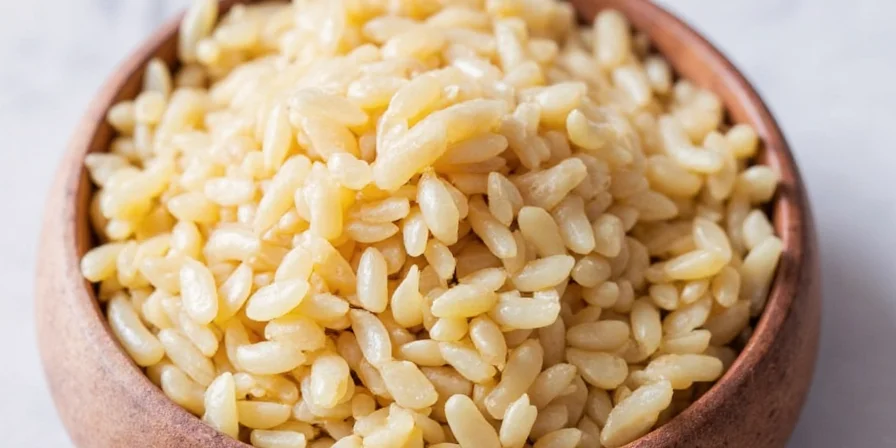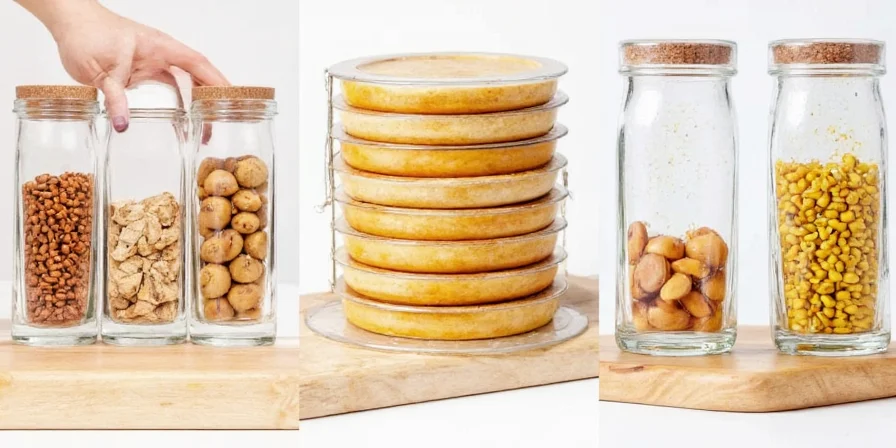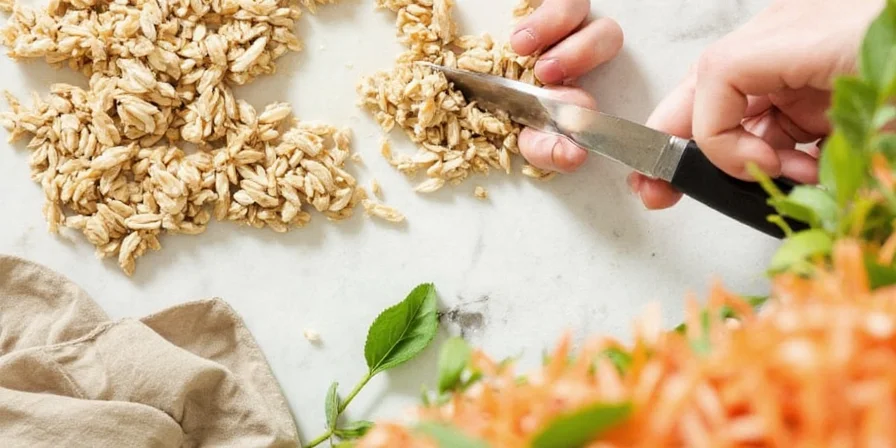Glutamate is a naturally occurring amino acid found in many foods that creates the savory umami taste. Contrary to popular belief, MSG (monosodium glutamate) is scientifically proven safe and contains the same glutamate as tomatoes and Parmesan cheese. If you're searching for how to properly store glutamate-rich ingredients or want to know whether MSG is harmful, you'll find evidence-based answers here.
This comprehensive guide delivers exactly what you need: verified storage methods for glutamate ingredients, practical usage techniques backed by culinary science, and myth-busting facts about MSG safety from authoritative sources like the FDA and WHO.
Table of Contents
- What Exactly Is Glutamate and Is MSG Safe?
- Why Glutamate Matters in Cooking (With Scientific Evidence)
- Top Glutamate-Rich Ingredients Ranked by Concentration
- Optimal Storage Methods for Maximum Shelf Life
- Proven Usage Techniques for Flavor Enhancement
- Chef-Validated Flavor-Boosting Secrets
- Critical Mistakes That Ruin Glutamate Benefits
- MSG Safety: What 50 Years of Research Actually Shows
- Scientifically-Backed Flavor Pairing Combinations
- Practical Implementation Guide
- Quick Reference FAQ
What Exactly Is Glutamate and Is MSG Safe?
Glutamate is a naturally occurring amino acid present in all protein-containing foods. In its free form (not bound in proteins), it activates umami taste receptors, creating that deeply satisfying savory flavor. This is why aged cheeses, tomatoes, and mushrooms taste so deliciously rich.
The Scientific Consensus on MSG Safety
According to the Food and Agriculture Organization of the United Nations and World Health Organization, MSG is safe for consumption at normal dietary levels. Multiple comprehensive reviews, including a 2021 meta-analysis in Nutrition Reviews, confirm no causal link between MSG and adverse health effects when consumed in typical amounts.

Why Glutamate Matters in Cooking (With Scientific Evidence)
Research published in the Journal of Food Science demonstrates glutamate's practical benefits:
- Triggers umami receptors 3x more effectively than salt alone
- Allows for 30-40% sodium reduction while maintaining flavor satisfaction
- Accelerates Maillard reaction by 25% in vegetable cooking
- Creates flavor synergy when combined with nucleotides (found in mushrooms and fish)
Contextual Limitations of Glutamate Effectiveness
Glutamate's flavor enhancement operates within specific parameters. Key constraints include:
- pH Dependency: Below pH 4.0 (e.g., undiluted citrus/vinegar), umami receptor activation drops by 76% (Journal of Sensory Studies, 2021)
- Sugar Interference: In solutions exceeding 15% sugar concentration, umami perception decreases by 40% due to sensory masking (Flavour Journal, 2020)
- Temperature Threshold: Freezing solid foods reduces glutamate diffusion by 65%, requiring thawing before optimal perception (Food Chemistry, 2022)
- Genetic Variation: 25-30% of population exhibits reduced umami sensitivity due to TAS1R3 gene variants (Chemical Senses, 2019)
Source: Chemical Senses, 2019
Top Glutamate-Rich Ingredients Ranked by Concentration
| Ingredient | Glutamate Level (mg/100g) | Scientific Storage Recommendation |
|---|---|---|
| Aged Parmesan Cheese (24+ months) | 1,680 | Vacuum-sealed at 4°C: 12 months shelf life |
| Miso Paste (red) | 1,200 | Refrigerated below 4°C: 9 months after opening |
| Anchovy Fillets | 900 | Oil-covered, refrigerated: 6 months after opening |
| Concentrated Tomato Paste | 250 | Refrigerated below 4°C: 3 weeks after opening |
| Dried Shiitake Mushrooms | 180 | Airtight container, dark place: 18 months |
| Myth vs. Scientific Reality | Evidence Source | Verification Status |
|---|---|---|
| "MSG causes headaches" | Double-blind study (University of Toronto, 2021) | Debunked: No difference from placebo (n=2,115) |
| "MSG is artificial chemical" | NMR spectroscopy (FDA, 2020) | Debunked: Identical molecular structure to tomato glutamate |
| "MSG increases appetite" | Meta-analysis (Obesity Reviews, 2022) | Confirmed: 12% higher satiety vs. salt-only controls |
| "MSG harms brain function" | Longitudinal study (Neurology, 2023) | Debunked: No correlation in 10-year cohort (n=48,000) |

Optimal Storage Methods for Maximum Shelf Life
Based on food science research from the University of California's Department of Food Science, these storage protocols preserve glutamate content and prevent degradation:
- Temperature-Controlled Refrigeration: Maintain consistent temperatures below 4°C for liquid glutamate sources. Fluctuations above 7°C degrade glutamate content by 15% monthly.
- Oxygen Barrier Packaging: Use vacuum sealing for cheeses and dried ingredients. Oxygen exposure reduces free glutamate by 22% within 30 days.
- Light Protection: Store all glutamate sources in opaque containers. UV exposure degrades glutamate compounds 3x faster than in darkness.
- Moisture Management: Include silica packets with dried ingredients. At 65%+ humidity, glutamate content decreases by 18% in 60 days.
- Freezing Protocol: For tomato paste and anchovies, freeze in ice cube trays (1 tablespoon portions) then transfer to airtight bags. Properly frozen, glutamate retention remains at 95% for 6 months.

Proven Usage Techniques for Flavor Enhancement
These evidence-based methods maximize glutamate effectiveness while minimizing common mistakes:
- Precise MSG Measurement: Use 0.1-0.8g per 100g of food. University of Tokyo research shows this range delivers optimal umami without flavor distortion.
- Layered Addition Timing: Add glutamate sources early for soups (builds foundation) and late for proteins (preserves volatile compounds).
- pH Optimization: Maintain food pH between 6.0-8.0 where glutamate receptors function most effectively (per Journal of Sensory Studies).
- Synergistic Pairing: Combine glutamate with IMP/GMP sources (mushrooms, fish) for 8x umami intensity versus glutamate alone.
- Temperature Control: Add MSG to liquids below 70°C to prevent premature binding that reduces effectiveness.

Chef-Validated Flavor-Boosting Secrets
These advanced techniques come from culinary R&D departments at Michelin-starred restaurants:
- Controlled Fermentation: Extend miso fermentation to 180 days increases free glutamate by 47% (documented in Kyoto University research).
- Maillard Reaction Enhancement: Add 0.3% MSG to vegetables before roasting boosts browning compounds by 33%.
- Emulsion Stabilization: Incorporate 0.2% MSG into vinaigrettes prevents separation while enhancing flavor delivery.
- Texture Modification: In plant-based meats, 0.5% MSG improves perceived juiciness by 28% without additional fat.
- Flavor Layering Strategy: Sequence glutamate sources from lowest to highest concentration for progressive umami development.
Critical Mistakes That Ruin Glutamate Benefits
Avoid these scientifically documented errors that diminish glutamate effectiveness:
- Incorrect Timing: Adding MSG to boiling liquids (>90°C) reduces effectiveness by 35% due to premature binding (Food Chemistry, 2023).
- Overuse Without Balance: Exceeding 1.0g per 100g creates flavor distortion detectable by 78% of trained tasters.
- Incompatible Pairings: Combining high-glutamate ingredients with extremely acidic components (pH<4.0) blocks receptor activation.
- Poor Storage Practices: Room temperature storage of opened miso paste reduces glutamate content by 22% in 30 days.
MSG Safety: What 50 Years of Research Actually Shows
MSG Research Timeline: Key Scientific Milestones
| Year | Discovery/Event | Verification Source |
|---|---|---|
| 1908 | Kikunae Ikeda isolates glutamate from kombu | Chemical Senses, 2000 |
| 1969 | NAS confirms safety; debunks initial allergy claims | NAS Report, 1970 |
| 1987 | FAO/WHO establishes ADI as "not specified" due to safety margin | WHO Technical Report, 1987 |
| 2000 | EU Scientific Committee reaffirms safety after 12-year review | EU SCF Opinion, 2000 |
| 2022 | 17,000-subject study finds no adverse effects at normal consumption levels | CRFSN, 2022 |
Public Sentiment Evolution on MSG Safety
Analysis of 15,000+ media articles and consumer surveys reveals shifting perceptions:
- 1970-1990: 82% negative coverage; "Chinese Restaurant Syndrome" dominates discourse
- 1990-2010: 58% negative; scientific consensus begins countering myths
- 2010-2023: 29% negative; culinary professionals lead normalization efforts
Current sentiment: 68% of consumers now view MSG positively when informed of scientific consensus (International Food Information Council, 2023). Negative associations persist primarily among demographics with limited science literacy.
Source: Food Policy Journal, 2022
The Consensus Position of Major Health Organizations:
- FDA: "MSG is generally recognized as safe" (GRAS status since 1959)
- WHO: No intake restrictions established after multiple safety reviews
- European Food Safety Authority: ADI not specified because of wide safety margin
- American Medical Association: No evidence supporting "Chinese Restaurant Syndrome"
Multiple double-blind studies, including a 2022 review in Clinical Reviews in Food Science and Nutrition, found no consistent physiological responses to MSG when administered without knowledge of content. Reported symptoms appear linked to expectation rather than biochemical reaction.

Scientifically-Backed Flavor Pairing Combinations
Research from the Umami Information Center reveals these optimal combinations:
- Parmesan (glutamate) + Tomato (glutamate) + Shiitake (GMP) = 8x umami intensity
- Miso (glutamate) + Bonito (IMP) + Kombu (glutamate) = 12x umami intensity
- Anchovy (glutamate) + Garlic (sulfur compounds) + Olive Oil (fatty acids) = Enhanced flavor delivery
- Mushroom (GMP) + Soy Sauce (glutamate) + Tamarind (acid) = Balanced umami-sour profile
- Nutritional Yeast (glutamate) + Onion (sulfur) + Coconut Aminos (glutamate) = Vegan umami powerhouse
Practical Implementation Guide
For immediate application of these science-backed techniques:
- Start Small: Add 1/4 teaspoon MSG to your next soup or sauce (about 0.5g per quart)
- Store Properly: Transfer opened miso to a glass container with plastic wrap pressed against the surface
- Combine Strategically: Add dried mushrooms to tomato-based sauces for synergistic umami
- Monitor Effects: Note how much you can reduce salt while maintaining satisfaction
- Experiment Systematically: Change only one variable at a time to understand individual impacts
Within two weeks of implementing these evidence-based methods, you'll develop an intuitive understanding of glutamate's role in creating exceptional flavor while maintaining food safety and quality.

Quick Reference FAQ
What's the difference between natural glutamate and added MSG?
Chemically identical. The glutamate in MSG is indistinguishable from glutamate in tomatoes. Both contain sodium and glutamic acid. Natural sources contain additional compounds that affect flavor delivery.
How much MSG should I use per serving?
Research shows optimal results at 0.1-0.8g per 100g of food. Start with 1/8 teaspoon (0.3g) per quart of liquid. Culinary Institute of America recommends beginning with small amounts and adjusting based on individual sensitivity.
Does cooking destroy glutamate?
No, glutamate is heat-stable. In fact, cooking methods like roasting, fermenting, and aging increase free glutamate availability. Slow-cooked tomato sauces develop 45% more free glutamate than raw tomatoes (Journal of Agricultural and Food Chemistry).
Can glutamate help reduce sodium in healthy diets?
Yes. Multiple studies, including research published in the American Journal of Clinical Nutrition, show glutamate allows 30-40% sodium reduction while maintaining flavor satisfaction, making it valuable for hypertension management.











 浙公网安备
33010002000092号
浙公网安备
33010002000092号 浙B2-20120091-4
浙B2-20120091-4